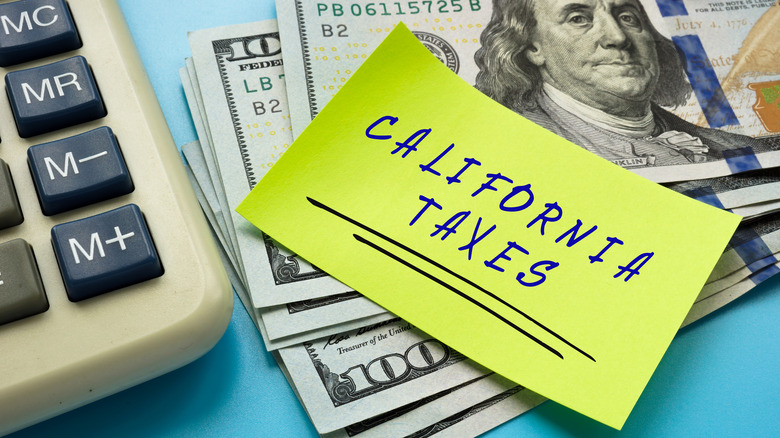These Are The California State Tax Rates And Tax Brackets For 2023-2024
With tax time seemingly right around the corner, it helps to know exactly how much you should set aside so that there are no surprises when the final calculations are made. Unless you live in a state without a state income tax like Alaska, Florida, Nevada, New Hampshire, South Dakota, Tennessee, Texas, Washington, or Wyoming, chances are you're looking at paying at least a small percentage of your yearly earnings toward both your federal and state tax bills for the upcoming 2023 reporting year.
In 2021, 13 states made changes to their personal income tax brackets, which saw an actual decrease in the percentages taxpayers had to hand over. States such as Arkansas, Idaho, Louisiana, Montana, North Carolina, and Ohio showed tax rate reductions through either personal income tax brackets or flat income tax rates.
With income tax being a significant revenue for most of the United States, which had contributed to around $455 billion in the fiscal 2021 tax year, it's important to know where you now land when it comes to the tax rate. This is especially significant if you live in sunny California on the West Coast where the state adopted a 10-tier tax bracket system that's the highest in the country. So let's take a look at the breakdown of the state of California's tax brackets and what that means for you if you call the Golden State your home.
Breakdown of California's tax rates
States that use a tiered income tax system assign a rate to a specific income tax bracket that increases with the amount earned in the year. This system may seem a little daunting at first, but knowledge of it can be of great use when you prepare for the tax season. California, in particular, is second only to Hawaii in having the most tiered income tax brackets, and the rate starts at 1% and climbs all the way up to the country's highest tax rate, 13.3%, according to the Tax Foundation.
How these levels work is if you earned less than $9,325 for the year, then you would be required to pay 1% in income taxes after taking away a standard individual deduction of $4,803. Those who earned between $9,326 and $22,107, would be taxed at a rate of 2%. Next, income levels that fall between $22,108 and $34,892, would see their earnings taxed at 4%. If your annual income reached the range of $34,893 to $48,435, then you fall in the 6% bracket.
Those with yearly earnings of $48,436 to $61,214 would be looking at a rate of 8%. Income between $61,215 and $312,686 would be taxed at 9.3%. Earnings that range from $312,687 and $375,221 are taxed at 10.3%. Income from $375,222 and $625,369 see an 11.3% rate. Upper tiers earning between $625,370 and $1 million are taxed at 12.3%, and finally, any earning over $1 million would be subject to a 13.3% tax.

